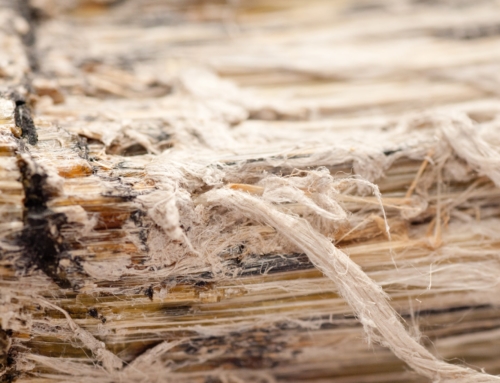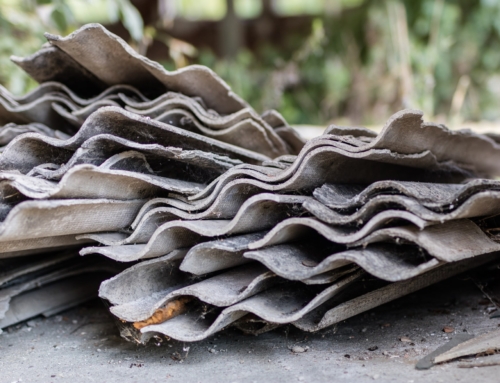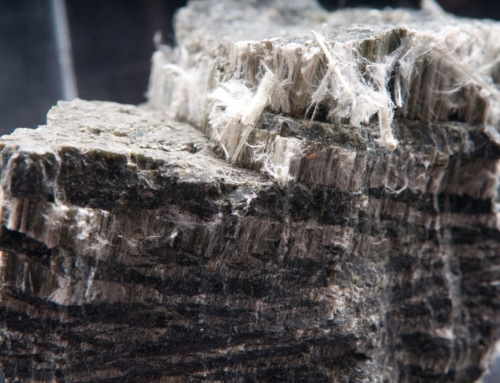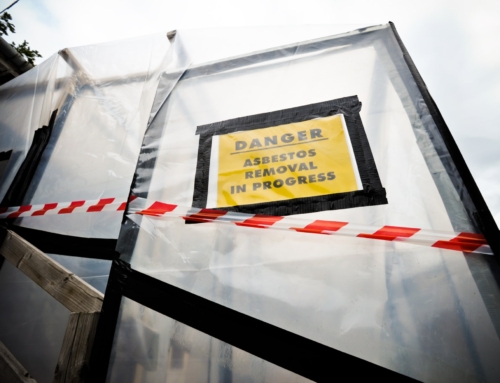Asbestos encapsulation is a method of sealing and containing asbestos fibres within a protective coating applied by professionals. Rather than removing asbestos-containing materials (ACMs), encapsulation techniques involve using a special sealant. This forms a shield over the asbestos to prevent the release of harmful microscopic fibres, which can cause major health issues if inhaled. Encapsulation is often considered when complete asbestos removal is too challenging or impractical.
What’s the difference between encapsulation and enclosure?
Asbestos enclosure and encapsulation are both ways to control this hazardous material, but they differ in how they contain the fibres. Encapsulation is the process of applying a sealant directly to the ACM, while enclosure involves putting a physical barrier around it, like panels or a wall. Encapsulation tries to stop fibres from being released, while enclosure creates a contained area.
Is asbestos encapsulation safe?
If the process is carried out by trained asbestos professionals using approved methods, asbestos encapsulation is considered safe and effective in managing ACMs when removal isn’t possible. The encapsulation process reduces the risk of fibre inhalation. Encapsulation should only be carried out by licensed asbestos contractors to ensure compliance with safety regulations and standards.
Is encapsulated asbestos a health hazard?
While the aim of encapsulation is to prevent asbestos fibre release, it does remain a potential health hazard. For example, the coating applied can also degrade or get damaged over time, creating gaps for the fibres to escape.
Asbestos encapsulation risks mean continual monitoring and inspections from a trained surveyor are key. They can check the effectiveness of the encapsulation and ensure all barriers and sealants remain intact. Asbestos encapsulation should be checked at least once a year, looking for peeling, cracks, moisture and structural movement. There will usually come a time when removal is the best option.
Asbestos removals vs encapsulation – which is best?
Choosing between asbestos removal and encapsulation depends on the condition of the asbestos, the different risks involved and the feasibility of removal. Complete asbestos removal is usually preferred, especially when materials are damaged or if a renovation or demolition is planned.
However, encapsulation is suitable in cases where removal is difficult or there’s minimal existing damage and the asbestos is currently stable. Each case should be assessed individually, considering the affected material, safety, cost, building occupancy, ease of access and long-term asbestos management.
How much does asbestos encapsulation cost?
The cost of asbestos encapsulation services varies. Factors increasing the price of encapsulation include the size of the area, accessibility, the type of sealant used, the complexity of the prep work, the location (is scaffolding needed?) and how much debris will need to be safely disposed of.
How do you know if a material is suitable for encapsulation?
Good candidates for encapsulation include in-tact and stable ACMs that aren’t releasing fibres. There also needs to be a very low risk of disturbance (so no renovations planned anytime soon!), and the location should be dry.
Encapsulation isn’t suitable for damaged, friable and crumbling ACMs in poor condition. If there are any renovations, demolitions or structural changes planned, removal is best. Encapsulation should also be avoided in hazardous or high-traffic zones where the risk of damage is higher.
What can be used to encapsulate asbestos?
There are lots of different types of asbestos and encapsulating products on the market. This includes spray-on coatings that seal the asbestos and bridging encapsulants to fill cracks and deeper coatings. Asbestos penetrating sealants soak into the material to bond with the fibres, while surface sealants create an extra protective layer over the top of the ACM.
The preferred product depends on whether the material is exposed to outdoor elements or not, heat and humidity risks, condensation risks, the degree of existing damage (like cracks and flaking) and accessibility (how easy it will be to maintained the sealed surface after encapsulation).
What happens during asbestos encapsulation?
The asbestos encapsulation process involves several steps. There will be an in-depth asbestos survey to determine the condition of materials and the site’s suitability for the work. Surfaces containing asbestos are prepared by cleaning and removing any loose debris. In some cases, a primer may be applied to aid adhesion.
The sealant will be carefully applied to form an effective coating and barrier. It’s then allowed to cure and harden, creating a durable protective layer over the asbestos-containing materials. After encapsulation, the site undergoes a thorough inspection to ensure the effectiveness of the process. Any touch-ups or additional coats are applied as necessary.
What can go wrong with asbestos encapsulation?
An asbestos contractor will always assess the risks of encapsulation and removal. For the encapsulation procedure, health and safety risks include dust and fibre release if the sealant preparation is sloppy. The need for correct protective equipment and safe application methods is crucial.
There are also risks of asbestos encapsulation failing, including incomplete seals, further cracks, UV exposure and moisture damage (leading to degradation).
How long does asbestos encapsulation last?
So, is asbestos encapsulation permanent? No! The longevity of asbestos encapsulation depends on the type of sealant used, environmental conditions and the integrity of the surface covered. When performed correctly, asbestos encapsulation can provide long-term protection, effectively containing asbestos fibres for an extended period.
Routine inspections, asbestos surveys and maintenance are recommended to monitor the condition of the encapsulated materials and address any issues fast. You may find it’s best to consider asbestos removal in the long run.
Considering asbestos encapsulation or removal services? Request a survey now
Goodbye Asbestos offers expert asbestos services, covering locations such as Gosport, Guildford and Hammersmith. To arrange an asbestos survey and quote, get in touch.




